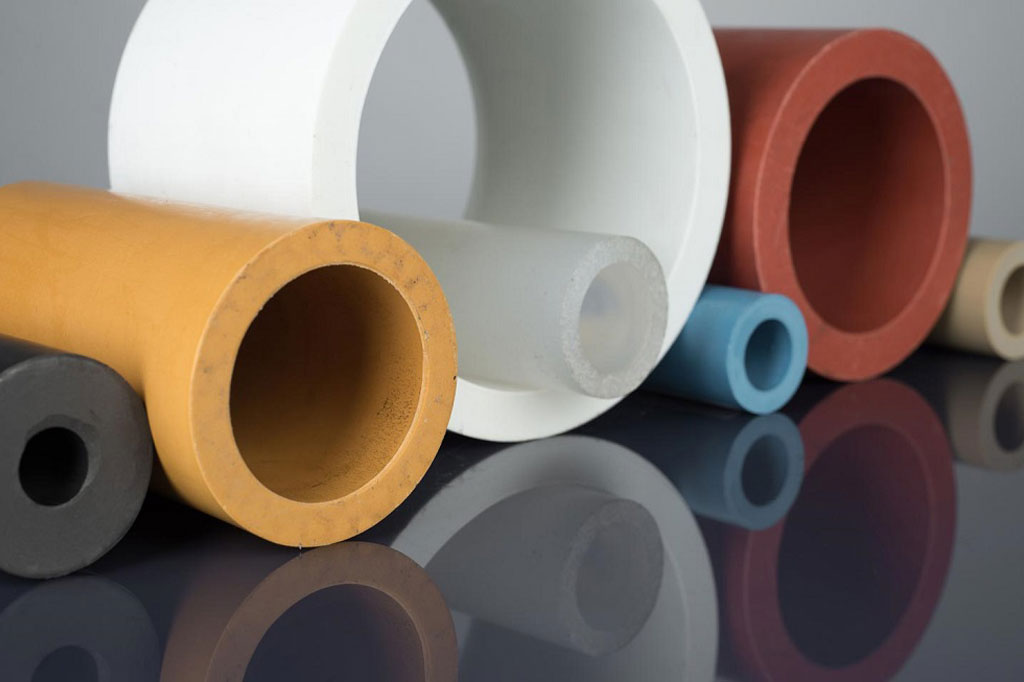Virgin PTFE, ePTFE, modified PTFE, and filled PTFE are 4 four different variations of PTFE. Each type possesses unique features and finds utility in different applications. Here’s a comparison table of them.
Property | Virgin PTFE | ePTFE | Modified PTFE | Filled PTFE |
Composition | Pure PTFE | Pure PTFE | PTFE with additives/modifiers | PTFE blended with fillers |
Structure | Non-porous | Highly porous | Non-porous | Non-porous |
Density (g/cm³) | 2.13 - 2.20 | 0.35 - 0.50 | 2.13 - 2.19 | 2.10 - 2.30 |
Flexibility & Compressibility | Relatively low | Flexible | Relatively low | Relatively low |
Tensile Strength (MPa) | 20 - 40 | 4 - 15 | 20 - 30 | 20 - 40 |
Temperature Resistance | -200°C - 260°C | -200°C - 260°C | -200°C - 260°C | Varies based on fillers |
Chemical Resistance | Excellent | Excellent | Excellent | Excellent |
Electrical Insulation | Excellent | Excellent | Excellent | Excellent |
Thermal Conductivity (W/m·K) | 0.25 - 0.35 | 0.03 - 0.10 | 0.25 - 0.35 | 0.25 - 0.35 |
Cost | Moderate to high | High | High | Varies (depending on filler) |
Applications | Gaskets, seals, bearings, insulators, etc. | Gaskets, filtration, medical applications | Bearings, electrical components, seals, etc. | Seals, bearings, piston rings, valve seats, etc. |
For more details, please read on…
Virgin PTFE
Virgin PTFE is a pure form of PTFE with no additives or fillers. It is a highly versatile and widely used material due to its exceptional chemical resistance, low friction coefficient, and excellent electrical insulation properties.
It can withstand exposure to a wide range of corrosive chemicals, including acids, bases, and solvents. Additionally, virgin PTFE has a broad temperature range, maintaining its properties from -200°C to 260°C (-328°F to 500°F).
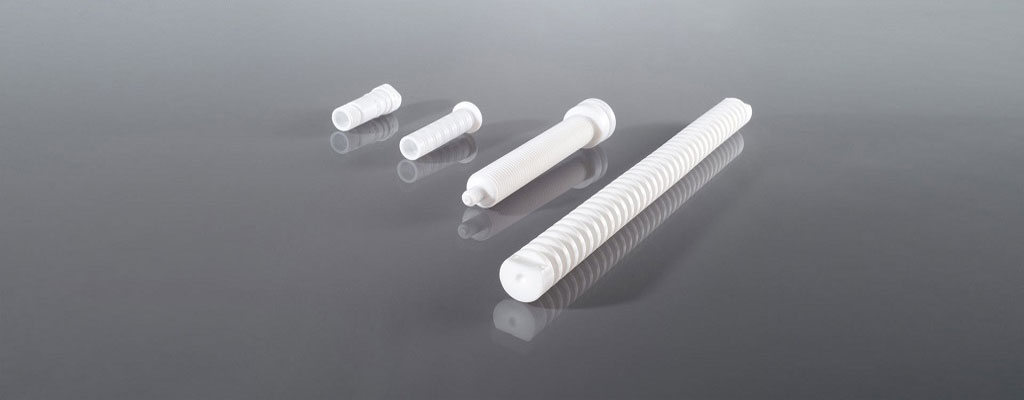
However, due to its non-filled nature, it may have some limitations:
- It will deform under load, which restricts its use in structural applications.
- It is difficult to bond or weld, limiting its suitability for certain fabrication processes.
- It has poor electrical conductivity, making it unsuitable for applications requiring good electrical properties.
- Additionally, its coefficient of thermal expansion is relatively high, which can cause dimensional changes in certain applications.
To address these limitations, modified PTFE and filled PTFE variants have been developed.
ePTFE
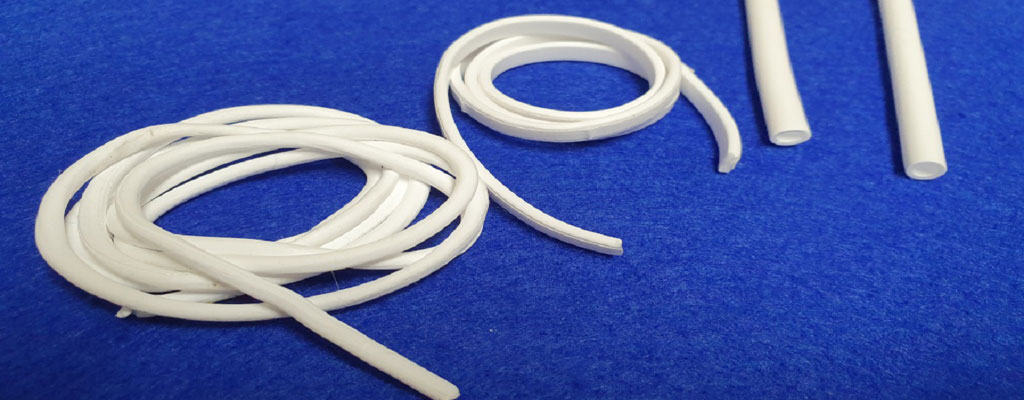
ePTFE (Expanded PTFE) is a variant of PTFE that undergoes a special expansion process. This process creates a microporous structure, resulting in a material with excellent breathability and filtration properties. ePTFE exhibits excellent permeability to air and water vapor while remaining impermeable to liquid water. ePTFE is commonly used in applications such as filtration membranes, medical implants, and breathable apparel.
Another advantage of ePTFE is its conformability. The expanded structure provides a high degree of elasticity, allowing it to conform to irregular surfaces. This makes it suitable for gasketing, sealing, and jointing applications.
Modified PTFE
Modified PTFE, also known as “mPTFE,” is a form of PTFE that has been chemically modified to enhance certain properties. The modification typically involves introducing small quantities of reactive substances into the PTFE matrix during the manufacturing process.
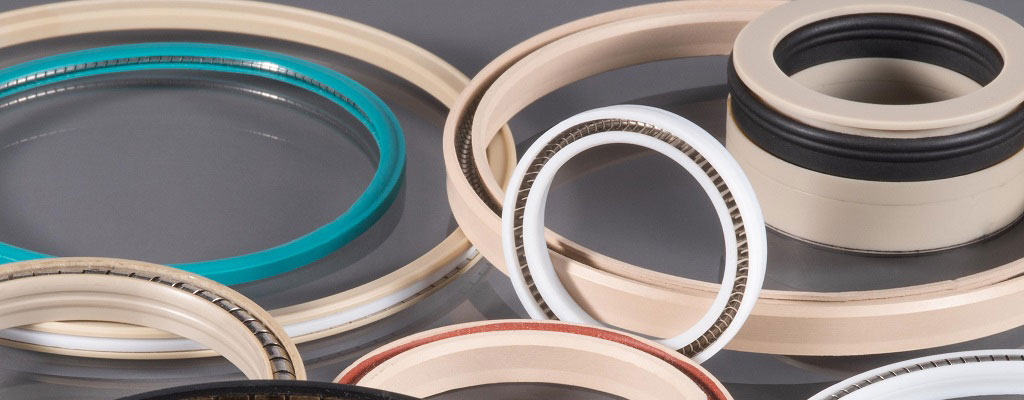
Here are some common methods for chemical modification of PTFE:
- Grafting: Grafting is a method of chemical modification of PTFE where reactive molecules are covalently attached to the polymer surface, enhancing its compatibility with other materials and improving adhesive properties.
- Surface etching: Surface etching involves the controlled removal of a thin layer of PTFE to create a rougher surface, increasing its surface area and promoting better adhesion with coatings or adhesives.
- Plasma treatment: Plasma treatment is a technique that exposes PTFE to a low-temperature plasma, generating highly reactive species that can react with the polymer surface, introducing functional groups and enhancing its wettability and bonding characteristics.
- Chemical vapor deposition (CVD): CVD is a method where a gaseous precursor is introduced to the PTFE surface, and a chemical reaction occurs, depositing a thin film or coating on the polymer.
One of the primary benefits of modified PTFE is its improved compressibility and creep resistance compared to virgin PTFE. The chemical modification alters the molecular structure, resulting in a material that can withstand higher compressive loads without significant deformation.
In addition to improved compressibility, modified PTFE exhibits enhanced wear resistance and reduced cold flow compared to virgin PTFE. These properties make it suitable for dynamic sealing applications, such as piston rings, where the material is subjected to friction and wear.
These modifications also address the low electrical conductivity of virgin PTFE, making modified PTFE suitable for applications requiring good electrical properties. The specific modifications can vary, and different grades of modified PTFE offer a range of mechanical and electrical characteristics to meet specific application requirements.
Filled PTFE
Filled PTFE refers to PTFE that has been compounded with various fillers to enhance specific properties. Common PTFE fillers include glass fibers, carbon fibers, graphite, bronze, and other materials. The choice of filler material depends on the specific requirements of the application, and different fillers can be selected to optimize the desired properties of the final product.
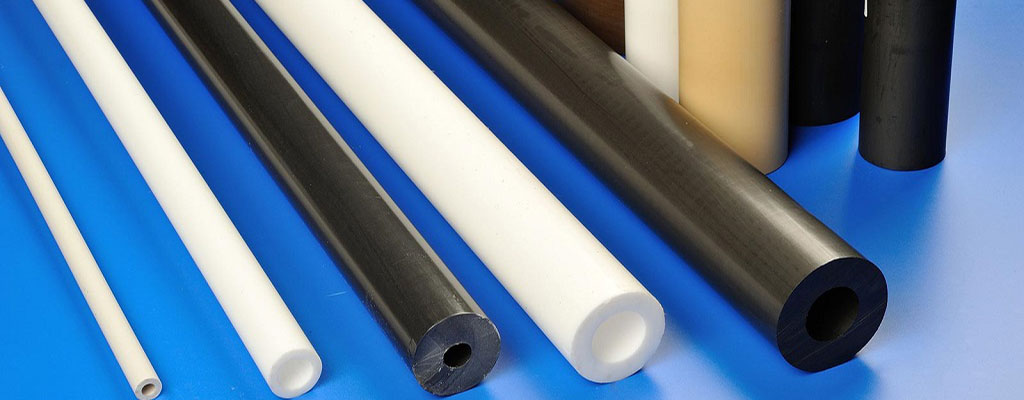
By incorporating fillers, filled PTFE can exhibit improved dimensional stability, higher tensile strength, reduced creep, and better thermal conductivity compared to virgin PTFE. These enhancements make filled PTFE suitable for applications where virgin PTFE’s limitations may pose challenges.
It’s important to note that the addition of fillers can affect some of the inherent properties of PTFE. For example, the coefficient of friction may increase, and the chemical resistance may be slightly reduced depending on the filler material.
Conclusion
In summary, while virgin PTFE offers excellent chemical resistance and low friction properties, modified PTFE and filled PTFE variants provide enhanced mechanical strength, electrical conductivity, and other specific characteristics to meet diverse application requirements. ePTFE, on the other hand, is a porous form of PTFE that excels in filtration and gasketing applications. The choice of PTFE variant depends on the specific needs of the application.

